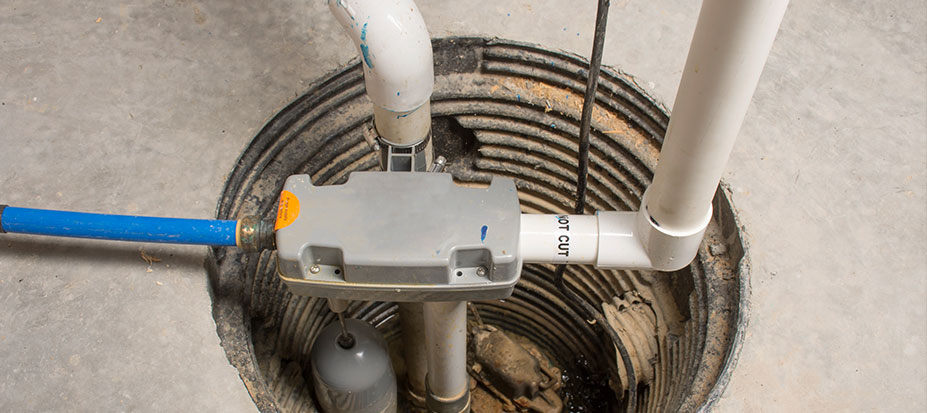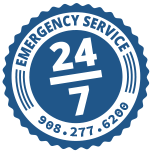A properly working sump pump will keep ground water from April showers and Spring thaw at bay.
Let’s face it: Your basement sump pump leads a fairly anonymous existence … until it stops working and your basement floods! If that ever happens, call Stashluk. Even better, call us for sump pump replacement before your sump pump fails.
Indeed, most homeowners don’t realize that the life span of their sump pump falls somewhere in between five to ten years, mainly depending on use. What are some other signs of potential sump pump failure, and how can you tell the best time for a sump pump replacement or upgrade?
How old is your sump pump?
Did your sump pump live in your home before you moved in? If you’ve been in your home for a few years, now’s a good time to think about the condition of your flood prevention pump. If you replaced your sump pump in the past but can’t remember if it was before or after Hurricane Irene, call Stashluk to inspect it. Your sump pump may be showing signs that it’s ready for replacement. Also keep an eye out for rust and brown discoloration due to bacteria. Over time, iron bacteria can take a gelatinous form which can reduce the free flow of water in your sump pump as well as the plumbing leading away from it.
Is your sump pump often running?
If you often hear your sump pump working steadily during or after every rain storm, chances are it’s having a difficult time pumping water away from the foundation of your house. If you find it running even when it hasn’t rained and there is no water present in the sump pit, there may be a problem with the switch or the float may be caught against the inside of the sump pit wall.
Not surprisingly, frequent running will wear on the life of the pump motor and its parts, as will the damage that is done by the constant sucking in of dirt and other sediment. As with all mechanical equipment, more use equals more wear and tear and a shortened operational life.
Is it rarely used?
Use it or lose it. Like anything else, an overly idle sump pump can still fail in the event it is rarely used. The best way to ensure that it is working properly is to test it regularly by filling the pit with water. If you’re not sure how to test it, call Stashluk and we’ll come to your home and test and inspect the pump.
If you’re not sure how to test your sump pump, call Stashluk. We’ll test and inspect your sump pump.
The sump pump makes strange noises
If your sump pump is emitting strange sounds when it’s pumping water it could be a sure sign that mechanical failure is imminent, or that there’s dirt in the pit or something has fallen into the pit and jammed the impeller. Worn or damaged parts such as bearings, impellers and other parts can generate loud noises and grinding sounds that may require sump pump replacement or repairs. If the impeller is bent, that usually requires replacement of the entire unit because it’s very difficult to bend it back into shape.
Are you picking up bad vibrations?
Your sump pump’s impeller is a propeller-like fan that draws water in to be pumped out. If a stone, a small ball or toy, or other debris gets sucked into the unit and bends the impeller, the damaged blade can throw off the balance of the pump and cause it to wobble, putting stress on the entire unit. A wobbly, vibrating pump will likely need replacement.
What if the power goes out?
A professionally installed sump pump should be directly wired into your home’s electrical panel with its own breaker switch. As we know all too well in Northern New Jersey, our old, above ground power infrastructure leaves us exposed to frequent power outages during storms—which is the worst time for a sump pump to fail. That’s why you need a backup system that will kick on when the power to your main pump goes out. Stashluk can help you determine the right backup system for your home, whether it’s a battery operated system or a water-fed backup system. For the ultimate protection, your best backup power option is a whole house standby generator. We lean towards water driven backup pumps. Though more expensive of an installation, water driven pumps are so much more reliable.
Which kind of sump pump is best for my home?
There are two kinds of sump pumps: submersible and pedestal. If you’re into more powerful, quiet operation, a submersible pump may be right for your home. Since the motor housing is submerged in water, submersible pumps typically operate more quietly than pedestal pumps, which have the motor housing atop the pedestal.
Because of their greater water pumping power, submersible pumps are better for situations where basement water is more frequently present. However, because they work harder and more frequently, the flip side of this benefit is their lifespan may be shorter than a pedestal pump.
Submersible pumps are better for situations where basement water is more frequently present.
How much horsepower do I need?
When it comes time to replace a sump pump, there are several things to consider beyond just a new pump. Calculating the distance the water has to travel through pipes, how many turns there are along the way, sump pit size, pipe diameters and how vertical the pathway is all contribute to determining the right size sump pump. The last thing you want to do is purchase a pump that can’t handle the volume of water that needs to be pumped. If you’re not sure which pump is right for your basement water problems, call Stashluk and we’ll be happy to make a recommendation.
If you need sump pump replacement, give Stashluk a call!
A flooded basement can cause hundreds if not thousands of dollars of damage. Don’t let an old sump pump put you under water. Give a Stashluk a call today at 908.277.6200.


